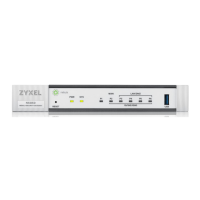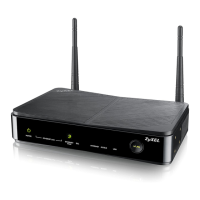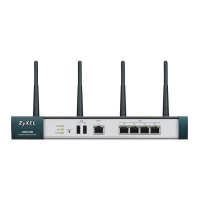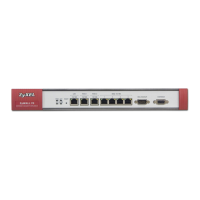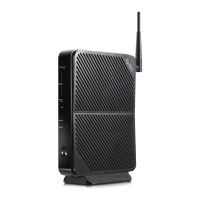Chapter 4 Configuration
NSG Series User’s Guide
24
Figure 22 SSH Example 2: Test
2 Enter “ssh –1 192.168.1.1”. This command forces your computer to connect to the NSG using SSH
version 1. If this is the first time you are connecting to the NSG using SSH, a message displays prompting
you to save the host information of the NSG. Type “yes” and press [ENTER].
Then enter the password to log in to the NSG.
Figure 23 SSH Example 2: Log in
3 The CLI screen displays next.
4.3 User
Use this screen to change your NSG’s system password. It is strongly recommended that you change
your NSG's password. To access this screen, click Configuration > User.
Figure 24 Configuration > User
Each field is described in the following table.
$ telnet 192.168.1.1 22
Trying 192.168.1.1...
Connected to 192.168.1.1.
Escape character is '^]'.
SSH-1.5-1.0.0
$ ssh –1 192.168.1.1
The authenticity of host '192.168.1.1 (192.168.1.1)' can't be established.
RSA1 key fingerprint is 21:6c:07:25:7e:f4:75:80:ec:af:bd:d4:3d:80:53:d1.
Are you sure you want to continue connecting (yes/no)? yes
Warning: Permanently added '192.168.1.1' (RSA1) to the list of known hosts.
Administrator@192.168.1.1's password:
Table 11 Configuration > User
LABEL DESCRIPTION
Password Type your new system password (up to 63 ASCII characters). Note that as you type a
password, the screen displays a dot (.) for each character you type.
Retype Retype your new password for confirmation.
Apply Click Apply to save your changes back to the NSG.
Reset Click Reset to return the screen to its last-saved settings.
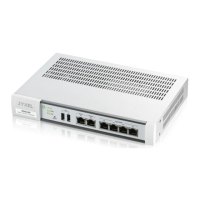
